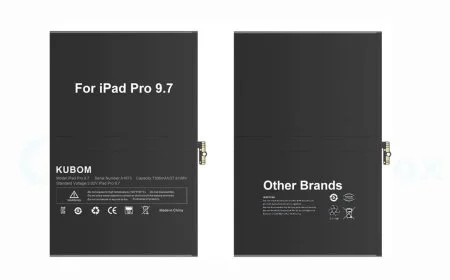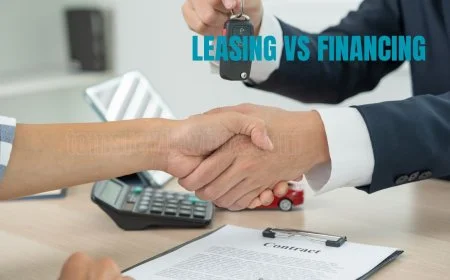Owner Financing: What It Is, How It Works, Pros, and Cons
Discover what owner financing is and how it benefits buyers and sellers with our comprehensive guide on its mechanics and advantages.

Key Takeaways
- Owner financing is a financial arrangement in which the seller of a property provides direct financing to the buyer, skipping banks and conventional lenders altogether. This can make things more convenient but often at the cost of higher interest rates.
- Some typical types of owner financing include land contracts, lease-purchase agreements, and mortgage or deeds of trust. Each of these options provides different terms specifically customized to benefit both the buyer and seller.
- Buyers with bad credit, little cash, or who want a special type of property are attracted to owner financing. It can be appealing there too in red hot competitive markets to get deals done quicker.
- Sellers benefit by receiving greater returns, and selling their properties as-is. Meanwhile, buyers benefit from creative terms with less stringent lender requirements.
- Owner financing carries significant risks, including balloon payments to buyers and buyer default risk to sellers. It’s important for both buyers and sellers to do their own rigorous due diligence and require protective clauses in contracts.
- Legal compliance should be the floor. Both buyers and sellers should understand state-specific regulations, include detailed contracts, and consider consulting legal professionals to ensure smooth transactions.
Owner financing is a method of buying property where the seller acts as the lender instead of a traditional bank or financial institution. Under this type of arrangement, the purchaser pays the seller directly based on terms that both parties agree to. This typically consists of a down payment, an interest rate, and a repayment schedule.
This option can make things easier, particularly for buyers who would have a tough time qualifying for traditional mortgages. Sellers win, often by earning interest on the loan and bringing more buyers to the table. It’s most commonly seen in real estate transactions but it can apply to any large purchase.
The terms are negotiated between both parties, making it a flexible option compared to other financing methods. This model continues to afford legal protections via enforceable written contracts.
What Is Owner Financing
Owner financing — sometimes called seller financing — is a type of real estate transaction where the seller directly finances the buyer’s purchase of a property. Unlike conventional purchases that go through banks or mortgage companies, this method allows the buyer and seller to decide their own terms.
Buyers make all payments directly to the seller, which streamlines the process. This method does not require mortgage approval, making it more accessible. This can be particularly advantageous for buyers with adverse credit histories.
It’s a boon for buyers eyeing one-of-a-kind properties that fall outside traditional loan parameters.
Definition and Explanation
With owner financing, buyers don’t have to deal with banks at all. Instead of a traditional mortgage, the seller provides a promissory note, outlining the terms of the loan (such as interest rates and payment plans).
Usually, these contracts require a balloon payment, meaning that a large amount is owed after a certain term. Because there is no bank, appraisals and inspections can usually be bypassed, speeding up the process.
The interest rates are typically higher, closer to 8%, to account for the additional risk taken on by the seller.
How It Works in Real Estate

Owner financed sales start with a down payment and continue with regular monthly installments. These payments are sent directly to the seller each month, giving them a reliable source of income and interest income.
The repayment period tends to be shorter than a regular mortgage, usually five to 10 years. At the end of this term, the buyer will likely have to refinance the remaining balance.
Or, instead, they could pay off the entire loan in one balloon payment. This arrangement provides many advantages, but it demands careful documentation and agreement to prevent confusion down the road.
Common Situations for Its Use
Owner financing is especially prevalent when buyers are unable to obtain a loan through other means because of low credit scores or erratic income. It’s a solution for properties that aren’t lender compliant, like fixer-uppers or unique homes.
Sellers in hot markets or buyers’ markets can use this method to bring a larger pool of buyers to the table. Though it is less prevalent now, owner financing can be an ideal solution depending on the circumstances.
Types of Owner Financing Arrangements

Owner financing provides flexibility with many arrangements, all tailored to address various needs. These arrangements give buyers and sellers the freedom to negotiate terms that best fit their financial situation and goals. As a result, they frequently find prospects that conventional financing wouldn’t present.
The actual agreement will specify how payments are to be made. Additionally, the document should explain the title ownership and how risks and obligations are handled.
Land Contracts Explained
A land contract is an arrangement between the buyer and seller. In this scenario, the buyer pays off the property directly to the seller rather than a conventional lender. The seller retains the title until the buyer has paid as agreed, protecting the seller’s interests.
Things like monthly payment amounts, term length, and interest rates are all negotiable. In a wrap-around land contract, the seller continues to pay their original mortgage. In the meantime, they profit from the buyer’s inflated monthly payments.
This kind of arrangement can be a great fit for buyers who have difficulty accessing traditional financing or who require more flexible terms.
Mortgage and Deed of Trust Overview
Mortgages and deeds of trust are security instruments that make certain the buyer’s loan is secured by the property itself. With a mortgage alternative, the buyer borrows money directly from the seller or a lender.
By contrast, with a deed of trust, a neutral third-party trustee holds the title until the buyer pays back the loan. Sellers can negotiate whether they finance part of the purchase (for example, $50,000 alongside a lender’s $150,000) or the entire amount.
Balloon payments, where larger sums are due at a later date, are another feature to mitigate seller risks. These documents ensure the buyer’s and seller’s rights and obligations are clearly defined, safeguarding both parties in the event of a dispute.
Lease-Purchase Agreements Details
Lease-purchase agreements mix leasing with the opportunity to buy. These two-part contracts are particularly well-suited for buyers who need time to get their financial house in order or obtain more traditional financing.
Throughout the lease, buyers are renting the property, with a portion of rent going toward the property’s purchase price. Sellers keep title to the property until the sale is completed.
For instance, a buyer might lease a $200,000 home, put $70,000 down up front, and then obtain their own financing in a few years. Responsibilities such as property upkeep and payment obligations are clearly outlined, preventing any confusion at every step.
Benefits of Owner Financing

Owner financing comes with distinctive advantages for both the buyer and the seller, making it an appealing financing option in the real estate market. This unique approach fosters a win-win situation that sets it apart from traditional financing hurdles, as its adaptability and tailored terms contribute to its attractiveness for numerous prospective buyers and sellers.
Advantages for Buyers
Owner financing opens doors for buyers who may struggle with traditional mortgage approvals due to poor credit or limited savings. With less lender requirements, the closing costs are usually much lower, making it less of a financial burden.
For example, buyers may be able to sidestep some expenses such as loan origination and appraisal fees. When negotiating terms directly with the seller, customized terms can be agreed upon, such as a lower interest rate or flexible payment schedule.
For instance, a buyer might negotiate a 15-year term versus a 30-year term, customizing payments to match their finances.
Advantages for Sellers
Sellers win by avoiding lender requirements, allowing them to sell without making expensive repairs in order to pass inspection. Because monthly payments provide a consistent income stream and buyers usually pay interest on the financed amount, returns are enhanced.
A seller might require a 10% down payment to show serious intent. In this manner, they keep the deed as collateral against delinquency.
This method expedites the sale process and bypasses typical loan costs.
Drawbacks of Owner Financing

Disadvantages for Buyers
Owners financing is usually charge higher interest rates which result in higher monthly payments. For buyers, this can further stretch budgets and may necessitate additional planning. In traditional loans, you would get charged a 6% interest rate.
On the other hand, owner financing can instantly go to 8-10%, which increases costs dramatically over time. Owner financing can present a few drawbacks. Another challenge is the balloon payment.
In addition, many owner financing terms are short, frequently five to ten years, according to Chris McDermott. If you are unable to refinance or payoff the balance, you put yourself at risk of losing the property. This can be a significant drawback, especially if you need to refinance due to rising interest rates or a change in your financial condition.
Sellers who still have a mortgage may be limited. Alternatively, some contracts may be subject to “due-on-sale” clauses that could make the whole transaction messy. All buyers need to make sure they are getting competent legal guidance and that their deal is rock solid.
Disadvantages for Sellers
For sellers, the primary risk of owner financing is buyer default. Unlike banks, sellers don’t have the institutional safeguards, and the foreclosure process is lengthy and expensive. This can leave sellers stuck, both financially and legally.
Sellers are still liable for property maintenance over the course of the financing. For instance, if something needs a repair during the term, and both parties disagree on who should repair it, that can cause resentment.
Unambiguous terms of the agreement are very important in order to avoid conflicts in the future. Finally, legal restrictions can limit sellers’ capacity to provide financing. Without proper documentation, or review from an attorney, sellers may find themselves in hot water regarding compliance.
Protecting both parties is essential for a successful arrangement.
Key Legal Considerations
If you’re about to enter an owner financing agreement, knowing the key legal considerations can help protect buyers and sellers alike. These agreements create a risky financial relationship. By ensuring every piece is legally airtight, we safeguard the interests of all parties at the table.
In either case, consulting with knowledgeable real estate attorneys early in the process is a wise investment. Usually it’s one lawyer who prepares the documents. Both sides need to be properly legally represented and have the time to have those attorneys review and negotiate those terms.
The cost of not seeking legal guidance, while often an easy choice for some sellers, can result in costly disputes or unforeseen liabilities.
Important Clauses to Include
Every owner financing agreement should have these clauses in clear and understandable detail. These may include:
- Price of the loan, including the amount, interest rate, and length of amortization. Sellers usually carry for 3-5 years. They further complicate things by using a 15 to 20 year amortization period, resulting in a balloon payment coming due at the end.
- Default consequences, such as foreclosure, the sole legal remedy allowed under state law in North Carolina.
- Maintenance, care, and control obligations, requiring the property to be maintained so that the property remains in the same condition.
- Dispute resolution provisions to handle differences of opinion in a timely manner, through mediation or binding arbitration.
These clauses describe each party’s expectations and responsibilities minimizing the space for misinterpretations down the line.
State-Specific Regulations
Owner financing laws vary significantly from state to state, so it’s important to research local requirements. For example, several states mandate limited disclosures or documentation in order to safeguard buyers.
Take North Carolina, for instance, which requires foreclosure as the automatic disposition. Understanding these regulations helps avoid legal complications and ensures compliance with local laws.
Role of Promissory Notes
A promissory note is the heart of any owner financing transaction. It acts as a legal agreement outlining the terms of repayment – the loan figure, interest rate, and repayment plan.
This paper serves as proof of the purchaser’s indebtedness and promise to pay. To make sure the note is enforceable, the parties should go through each provision of the note with their respective attorneys.
Having a clear, well-documented promissory note in place cuts down on confusion and gives you legal protection should either side need it.
Structuring an Owner Financing Agreement

Structuring an owner financing deal requires a series of steps to protect the interests of both the property owner and the prospective buyer. Here's how to break it down effectively.
- Establish the property’s sale price based on its market value. Set an appropriate down payment. Don’t accept less than 10% or 20% of the property’s value to secure the buyer’s stake in the deal.
- For example, on a $200,000 house, the down payment could be between $20,000 and $40,000. Agree on an interest rate, often between 6% and 10%, reflecting current market conditions.
- Decide on a loan term that works for you, anywhere from 5 to 30 years. Next, come up with a payment plan—monthly or bi-monthly—that works within your budget and suits the seller’s needs.
- Include all terms, such as payment schedules, interest rates, responsibilities, and default conditions. We strongly suggest consulting a legal professional to ensure all aspects are properly covered.
1. Negotiating Terms and Conditions
This kind of direct negotiation between buyers and sellers can be key to finding the right terms for all parties involved. Both parties should have an open conversation about their needs including the buyer’s ability to pay and the seller’s preferred payment schedule.
These arrangements are often beneficial to both parties and can result in flexible agreements like balloon payments or sub-market interest rates. To incentivize a buyer to make timely payments, a seller could agree to charge a lower interest rate once certain benchmarks are met.
This provides motivation for the buyer and provides consistent revenue for the seller. The beauty of owner financing is flexibility and room for a creative solution based on unique circumstances.
A buyer who has a hard time obtaining a conventional mortgage can benefit from higher interest rates. On one hand, a seller may prefer a shorter loan term to reduce long-term risk. This flexibility is one of the biggest benefits of owner financing.
2. Drafting a Comprehensive Contract
A properly drafted contract makes clear the rights and duties of the parties. Be sure to cover all the important points in this agreement. These should include the amount of the loan, down payment, interest rate, payment schedule and any penalties for late payment.
For example, it could state that the buyer will pay $1,500 per month for 15 years with a 7% interest rate. Legal protections are equally important. Consulting a real estate attorney ensures the contract meets all federal and state laws.
This avoids future misunderstandings and gives you added security if problems do develop. Drafting clear clauses regarding property maintenance and insurance responsibilities can help avoid potential conflicts.
3. Ensuring Legal Compliance
Complying with applicable federal and state laws is an absolute requirement in owner financing. Sellers need to be aware of laws such as the Dodd-Frank Act, which regulates owner-financed loans under certain conditions.
Failure to do so may lead to fines or unenforceable contracts, exposing both parties to liability. Maintaining contracts is equally important. Because laws and market conditions are always changing, periodic reviews help make sure that the agreement continues to be fair and legal.
As an example, if one previously agreed to an interest rate of 7%, this may require revision to account for changes in the market. Both buyers and sellers benefit from these changes, reducing risks and providing a clear understanding of the agreements being made.
Risks Involved in Owner Financing
Risks for Buyers to Consider
Buyers need to be informed about financial risks associated with owner financing. These loans often carry much higher interest rates than conventional mortgages. Consequently, you could end up paying significantly more long-term.
Balloon payments can be a huge risk at the end of the term. If you fail to account for them, those unexpected six-figure payments can upend your plan. Failure to make payments can lead to losing the property, since sellers can start the repossession process much faster under owner-financed contracts.
Getting a read on the seller’s financial stability is another important step. If the seller gets into financial distress, it can put the buyer’s ownership rights or property title at risk. A deep dive into the seller’s situation is essential to prevent unexpected complications from arising down the road.
Risks for Sellers to Assess
Sellers are not without significant risk. Should a buyer default on their payments, the seller must go through the same process of foreclosure. This process can be very costly and cumbersome.
In this time frame, sellers will need to be responsible with their property. They will have to pay for maintenance, taxes and insurance, which can create further financial burden. Properties listed with owner financing typically attract a limited pool of buyers.
This can restrict their pool of potential buyers and cause them to have longer hold times. The simplest idea—the most essential thing—underlying owner financing is the idea of evaluating a buyer’s creditworthiness before agreeing to finance.
An uncertain buyer increases the likelihood of default. So it’s important to set terms they can actually meet, and ensure that you have the capacity to confirm they can continue to meet those terms.
What Happens if the Buyer Defaults
When a buyer defaults, sellers usually have to go through the foreclosure process to regain the home. This process adds legal costs and time which affects the seller’s income stream.
For sellers, home values will likely erode with the loss or the deterioration of homes. They might have to pay increased repair costs during this time as well.
To prevent this, contracts should have a provision detailing how defaults will be addressed. This could include providing clear terms with timelines for possible foreclosure or terms that let the buyer make up late payments within a certain time frame.
Alternatives to Owner Financing
Traditional Mortgage Options
Conventional mortgages are still the default option for buyers who want long-term reliability and defined terms. Unlike owner financing deals, these loans usually require banks or lending institutions to review a buyer’s credit, income, and debt before loaning money. Buyers require a good credit score and evidence of a consistent income to be approved.
If you qualify, conventional home loans can offer you significantly lower interest rates. They tend to have longer repayment terms, resulting in very predictable monthly payments. These features allow buyers to plan their budgets with greater precision.
Now due to burdensome documentation and rigorous eligibility requirements, the process can take months.
Rent-to-Own Agreements
Rent-to-own contracts offer a distinct route to homeownership. Under a lease-purchase, buyers lease a home for 1 to 3 years but have the option to purchase the home before the lease expires. A part of their rent goes towards the down payment.
This option works great for those on the path of building credit or saving for a mortgage themselves. Buyers will still be forced to pay inflated rent.
Sellers, on the other hand, face significant financial exposure in the event the property declines in value, since the seller’s payment may not fully recoup the loss.
Private Lending Solutions
Private lenders are another option, with more flexibility and quicker approval than a bank. These loans are a great option to help buyers get in with quick and easy financing.
It is important to consider the lender’s reputation and the terms to avoid predatory contracts. Private lending works for some buyers that can’t qualify for traditional loans, but needs to be done with care to prevent predatory practices.
How to Buy a Business with Owner Financing
Steps to Negotiate Terms
There are several straightforward steps to take to make the entire process seamless. First, figure out what the business is worth and how much owner financing you’ll need. This amount can vary, but is typically 10-30% of the total purchase price.
So, if a business is listed for $100,000, the owner might be willing to carry $20,000. This step is very important to set expectations right from the start.
Second, do the hard work of personally negotiating with the seller. Negotiate the payment terms including interest rates, monthly payment amounts, and/or a balloon payment. For example, balloon payments may involve larger amounts due at certain intervals, aiding in the mitigation of the seller’s risk.
Open and honest communication not only establishes trust, but it prevents confusion.
Last, create an owner-financing agreement that outlines payment schedule, maintenance duties, and default contingencies. For instance, clarify what occurs in the event of a missed payment or if the business fails to meet projections.
Having a proper letter of intent means both sides are protected and on the same page.
Structuring the Purchase Agreement
An owner-financed purchase agreement that has been properly structured can be the foundation for a smooth transaction. It spells out the details on all the terms, from how payments will happen to what occurs if something unexpected comes up.
For example, the contract of sale might have specific provisions regarding late payment penalties or allowance for deferments.
Owner financing also has the benefit of customization. Unlike conventional loans, the terms are negotiable and can be customized to fit your needs as well as the seller’s.
For example, you could set up lower payments in the early years as the business gets back on its feet. This flexibility is what makes owner financing so attractive and useful for most buyers and sellers.
Owner financing has risks for sellers, as they are the ones serving as the lender on the sale. It’s important to consider these risks along with the advantages, such as quicker and easier sales and greater accessibility to buyers.
Certainly, buyers must be diligent to make sure they are aware of exactly what they will be responsible for and the extent of their financial commitment.
Conclusion
Owner financing creates flexible solutions for both buyers and sellers. It provides a lot of flexibility and an opportunity to negotiate terms that address unique circumstances. It can make the process of buying more straightforward and open doors when other forms of financing seem impossible. It’s an opportunity fraught with risks that should be examined and planned for thoroughly. This can be avoided by having clear communication, detailed agreements, and the necessary legal advice to protect both parties and keep projects moving.
If you’re thinking about owner financing, do your research and truly consider the benefits and disadvantages. Explore your options, consult professionals, and proceed judiciously. Whether you’re a buyer or seller, knowing the ins and outs can put you in a position to proceed with confidence. Know what’s going on, and act in ways that further your interests.
Frequently Asked Questions
What is owner financing?
Owner financing arrangements occur when the seller of the property or business acts as the lender, allowing the buyer to bypass traditional mortgage lenders. This financing option is typically structured based on mutually agreed-upon terms.
What are the benefits of owner financing?
Owner financing is a valuable financing option that can make purchasing a home easier. This arrangement usually comes with less stringent prerequisites compared to traditional mortgage loans, a quicker approval process, and more adapted terms, helping prospective buyers who may not qualify for conventional financing.
What are the risks of owner financing?
Sellers face significant risks in an owner financing arrangement, including higher interest rates, shorter loan terms, and the potential for buyer default. This default risk may compel sellers to engage in costly litigation to reclaim their property or business, impacting their financial flexibility.
What types of owner financing arrangements exist?
Common types of owner financing arrangements include land contracts, lease-purchase agreements, or lease-option agreements, as well as promissory note agreements, offering owner financing options that provide flexibility for both buyers and sellers in the real estate market.
How can I structure an owner financing agreement?
An owner financing contract should clearly outline the loan amount, interest rate, and payment schedule, as well as the consequences of default. It's crucial to consult with an attorney to ensure the agreement is legally sound and safeguards the interests of both parties.
What legal considerations should I be aware of?
Legal considerations involve verifying the seller’s ownership of the property, compliance with state laws on owner financing arrangements, and drafting a clear owner financing contract. Both the buyer and seller should seek legal counsel to prevent misunderstandings or legal problems.
Are there alternatives to owner financing?
Sure, other options include conventional bank financing, SBA loans, and lease-to-own arrangements. These financing options depend on the buyer’s financial situation and the type of property ownership being pursued.
What's Your Reaction?










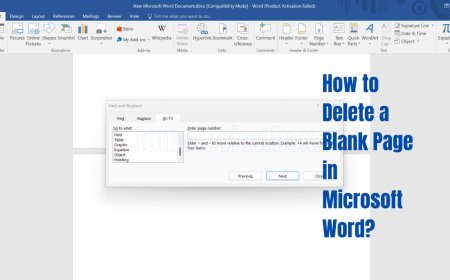
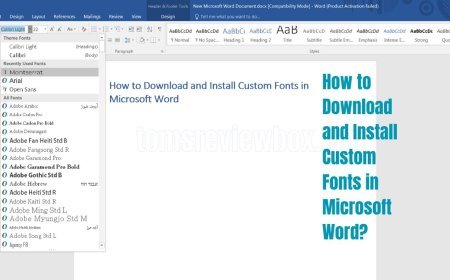












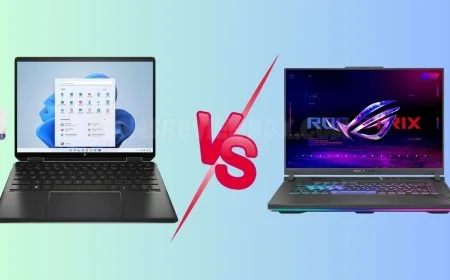








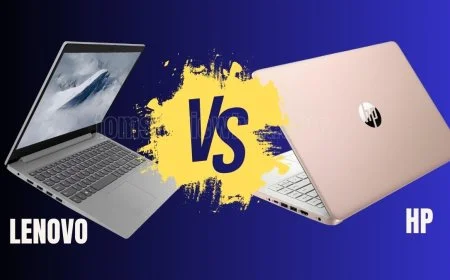





![MacBook Pro M5: All the features and specs you need to know [LEAKS REVEALED]](https://tomsreviewbox.com/uploads/images/202502/image_430x256_67bd6d7cd7562.jpg)

